Fashion retailers heading into 2023 will turn more and more to omnichannel marketing. That’s because omnichannel marketing combines traditional offline methods with digital ones, such as email campaigns and social media, to create an integrated and seamless customer experience.
Omnichannel marketing provides customers with the convenience of shopping when, how, and where they want while giving fashion retailers a competitive industry edge. Considering 73% of customers prefer shopping through multiple channels, it’s essential to have an omnichannel approach that meets customers’ expectations (Harvard Business Review).
Table of Contents
- > The fashion industry by numbers in 2023
- > Best omnichannel marketing campaigns of well-known fashion retailers to get inspired from
- > Omnichannel marketing ideas for fashion retailers
- > Omnichannel marketing challenges for fashion retailers: An overview
- > Key takeaways for your fashion retailer brand
- > Fashion retailers! We’ve got your back
The fashion industry by numbers in 2023
Here are some noteworthy statistics for fashion industry retailers to know in 2023:
- The global fashion industry was valued at $1.7 trillion in 2022 (Zippia).
- The U.S. fashion industry reached a value of $343.7 billion at the start of 2023 (Statista).
- The volume per person in the Apparel market may sum up to 89.2 pieces in 2023 (Statista).
- Fashion accounts for 2% of the world’s Gross Domestic Product (GDP) (Zippia).
- Analysts believe the fashion industry will grow by as much as 63% by 2030 (Fashion Network).
Best omnichannel marketing campaigns of well-known fashion retailers to get inspired from
The “Better for It” campaign by Nike
The Campaign:
Nike’s “Better for It” campaign was a passionate call for excellence in the women’s sports and fitness sector. It encouraged a global community of women to pursue their personal best, offering women inspiration and resources for inspiration, motivation, and goal-setting. In so doing, it set one of the best omnichannel marketing examples for fashion retailers to follow.
The “Better for It” had the following key features:
- An original narrative with a refreshed script featuring the inner thoughts of different women, giving voice to the frequent issue we all face: feeling uncomfortable while working out in a room full of strangers.
- A groundbreaking social media hashtag (#betterforit encouraging users to get involved).
Channels:
YouTube, Tumblr, Twitter, Pinterest.
The “Join Life” campaign by Zara
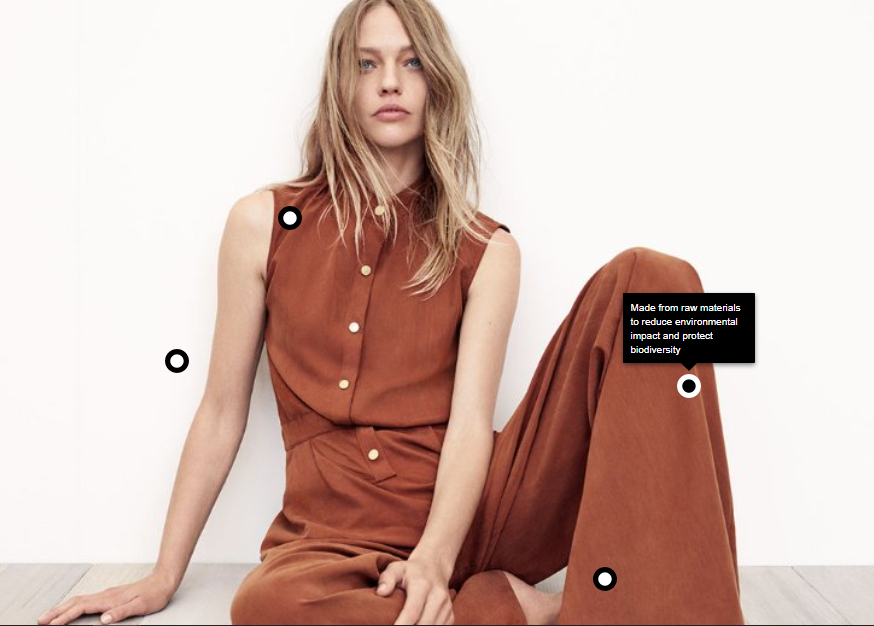
The Campaign:
Zara’s eco-friendly fashion line, “Join Life,” introduced the fashion retailer’s commitment to sustainability and conscious fashion. The campaign focused on creating a positive relationship with the environment and spread across digital channels such as Instagram, Facebook, YouTube, and Pinterest.
The “Join Life” key actions include:
- Multichannel differentiation with a strong emphasis on visual content, storytelling, and experiential marketing
- Launch through a series of Instagram stories that showcased the sustainable fabrics used in the collection and their environmental benefits
Channels:
YouTube, Facebook, Instagram, Pinterest.
Bonus tip: learn all about ZARA’s complete marketing strategy in our ZARA case study.
The “Close the Loop” campaign by H&M

The Campaign:
“Close the Loop” from H&M is an omnichannel marketing campaign built from the ground up to promote sustainable fashion through its clothing recycling program. The campaign features a diverse representation of models and voice-overs, encouraging consumers to recycle using the hashtag #closingtheloop on Instagram.
Through these actions, “Close the Loop” invites users to get involved in the campaign and encourages long-term brand loyalty by offering rewards for customers who participate in the initiative.
Channels:
Instagram, YouTube, Twitter.
The “Love 21” campaign by Forever 21
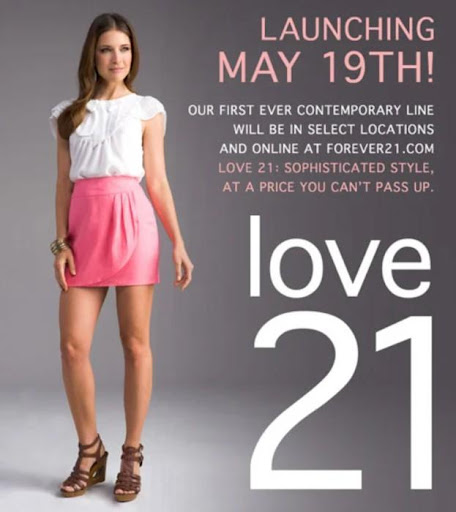
The Campaign:
Not to be confused with its accessory line “For Love 21,” “Love 21” was a successful debut of Forever 21’s clothing line geared towards women aged between 25-45. The campaign focused on sophistication and timelessness while still embodying the fashion house’s signature style.
“Love 21” undertook the following actions:
- It moved away from Forever 21’s signature young and casual styles to appeal to a broader range of women
- It made a new narrative and visual identity that spoke to a different aesthetic
Channels:
Pinterest, Twitter.
The “Creators Club” campaign by Adidas
The Campaign:
With the debut of its “Creators Club” program, Adidas introduced a way for customers to get rewarded for their engagement with the brand. Instead of a traditional loyalty program, the “Creators Club” favors a multi-tiered system that rewards customers for purchases, workouts, and runs.
Therefore, the success of the “Creators Club” program lies in the:
- Linking the apparel to the purchases, workouts, and running as part of a rewards system for customers
- Uniting customers through a community platform where they can share their stories and experiences with the Adidas product line
Channels:
Mobile app, Pinterest, YouTube.
The “Go Forth” campaign by Levi’s
The Campaign:
“Go Forth” was a popular omnichannel campaign by one of the biggest fashion retailers — Levi’s. It focused on celebrating the potential of the American nation and a future promise. Readings of Walt Whitman’s poems “America” and “Pioneers! O Pioneers” accompanied the campaign accentuated with appeals to engage with the mobile experiences that brought the product stories to life.
Levi’s engaged customers by:
- Asking them to share and discuss the little things they did daily to make the world a better place
- Starting meaningful conversations with customers about their lives
Channels:
Flipboard, Twitter, YouTube.

The “Polo Red” campaign by Ralph Lauren
The Campaign:
The “Polo Red” campaign by Ralph Lauren was designed to capture the spirit of someone keenly aware of their surroundings and looking for adventure. The campaign featured a series of stunning visuals, highlighting the bold and charismatic qualities of its star, Ansel Elgbert, known for his roles in “Baby Driver” and “The Fault in Our Stars.”
The success of the “Polo Red” relied on actions such as:
- Using a known actor like Ansel Elgbert for the campaign to draw attention and excitement around the line
- Tailored messaging that appealed to both men and women, with a focus on luxury and excitement
Channels:
Pinterest, YouTube.
The “My Calvins” campaign by Calvin Klein
The Campaign:
Calvin Klein’s “My Calvins” campaign promoted the brand’s underwear and denim collections. It garnered more than 884,000 Instagram posts using its hashtag, spreading its reach beyond the fashion world and into the everyday lives of people across the globe.
Calvin Klein achieved such success by:
- Leveraging multichannel marketing to engage an audience beyond the traditional fashion consumer
- Engaging models of diverse body types and identities to emphasize a more inclusive view of modern identity
Channels:
YouTube, Instagram.
Omnichannel marketing ideas for fashion retailers
Although omnichannel marketing is not new, there are numerous innovative ways in which fashion retailers can use the technology to create a more unified shopping experience for their customers. Here are some omnichannel marketing ideas fashion retailers can use to gain a competitive edge in the industry.
Omnichannel marketing idea #1: Interactive mirrors for in-store personalization
Interactive mirrors are virtual fitting rooms that enable customers to try on clothes without physically doing so. To personalize the shopping experience, retailers can adapt their mirrors with technology that suggests potential outfit combinations.
By introducing interactive mirrors, fashion retailers can provide customers with a tailor-made experience and assist them in finding the ideal outfit that suits their style.
Omnichannel marketing idea #2: Offer exclusive discount codes for an in-store purchase after specific online buys

Whenever someone makes a purchase, retailers can offer them an exclusive discount code if they go online and talk about their experience. Such action encourages cross-channel promotion and helps advertise one brand’s products to potential customers. This concept also helps to increase brand awareness and reinforces a positive relationship between the customer and the business.
Omnichannel marketing idea #3: Use a specific hashtag to run a memorable giveaway and promote user-generated content
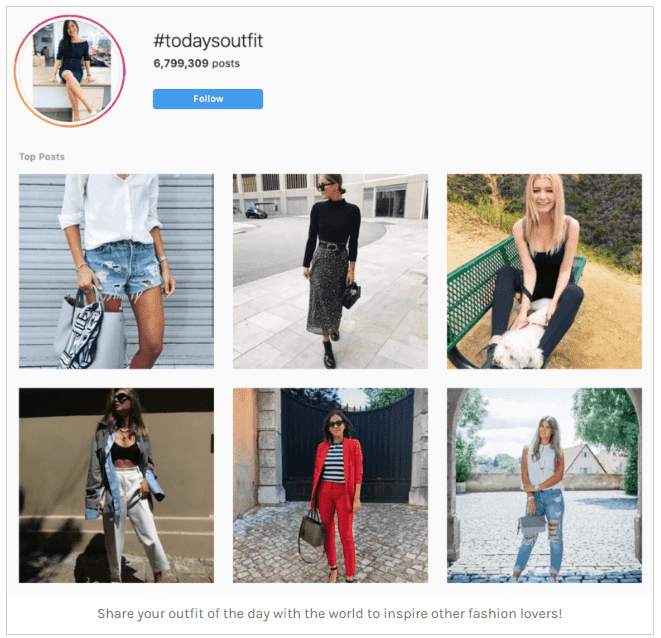
Fashion retailers can ask their customers to post photos of themselves wearing their clothing line. That will generate online word-of-mouth and help reinforce the image of the brand. Those who follow this idea can also use a hashtag to identify the campaign or giveaway — it only needs to be unique and easy to remember. This campaign type encourages customers to become brand advocates and allows them to share their experiences with the fashion retailer.
Omnichannel marketing idea #4: Virtual try-on technology with (AR) mirrors for an engaging shopping experience
One omnichannel marketing example that stands out is virtual try-on technology. With the integration of augmented reality (AR) mirrors, retailers can now provide shoppers with an interactive and truly immersive shopping experience. Shoppers can use these mirrors to virtually try on items and get a real-time view of how the products would look on them.
While consumers can now have a more immersive shopping experience, fashion retailers can further engage customers with authentic user interaction.
Omnichannel marketing idea #5: In-person styling appointments or virtual styling sessions to understand better your customers
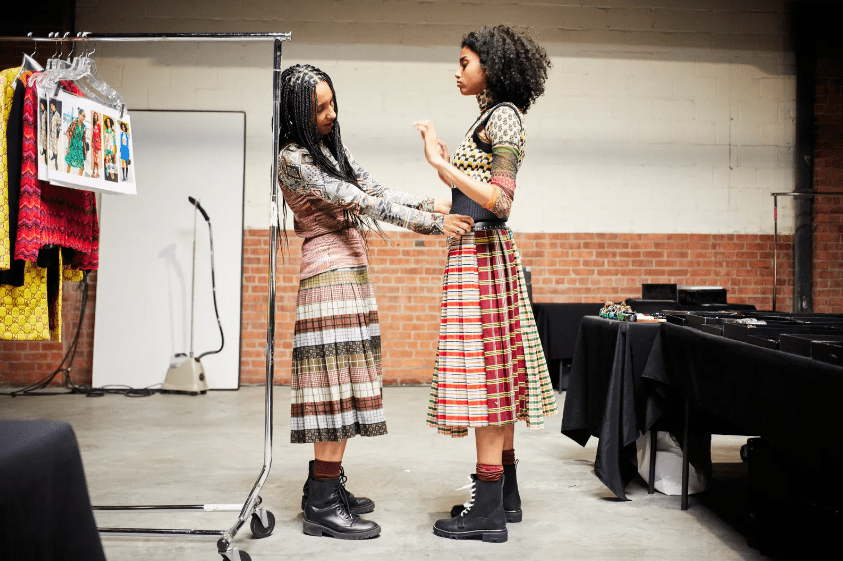
With virtual styling appointments, brands can help customers find the right items and show them how to wear their clothes differently. Virtual styling appointments can also help retailers get to know their customers better and understand their needs. They can use this opportunity to market new products or services, provide styling advice, and even offer exclusive discounts.
A personalized experience like this lets brands reach new prospects, encourage customer loyalty, and build customer relationships with existing or potential customers. It can also increase sales and generate more engagement on social media.
Omnichannel marketing idea #6: The try-before-you-buy version of click-and-collect service
Try-before-you-buy in the omnichannel marketing space is an innovative concept that allows customers to have a more tactile experience with the products that interest them. With this service, retailers combine the best of both worlds, online and offline, by allowing customers to reserve items online and visit the physical store to try them before buying.
This tactic helps fashion retailers to get customers in stores and increase sales. It motivates customers to try and purchase items they might not have otherwise.
Omnichannel marketing idea #7: Virtual style gallery for unique user-generated content

A virtual style gallery is a digital portfolio of unique user-generated content that can showcase and promote the brand. Fashion retailers can use it to feature photos, videos, and other content showcasing how customers use their products.
Encouraging customers to share products is an excellent omnichannel marketing tool, but it can also deliver valuable insight into customers’ preferences and tastes. Brands can use it to showcase and increase customer loyalty and satisfaction.
Omnichannel marketing idea #8: Implementing augmented reality (AR) try-ons within the mobile shopping app
Brands can also inspire customers to use augmented reality with their mobile phones to try on products virtually before they purchase. Augmented reality is a simple feature to add to a phone app, yet it can help customers make more informed decisions, resulting in fewer returns and improved satisfaction.
With augmented reality, customers can get a realistic view of what the product looks like on them, leading to better purchasing decisions and higher conversion rates. Moreover, retailers can save on costs associated with product returns.
Omnichannel marketing challenges for fashion retailers: An overview
Even the best clothing retailers may encounter omnichannel marketing challenges that are difficult to navigate. In the past few years, fashion retailers have experienced a significant change in how they interact with customers, both in terms of the number of channels available for marketing and the sheer volume of data that needs to get collected and analyzed. Here’s an overview of the ten most critical challenges fashion retailers have experienced:
Challenge #1: Keeping up with trends

Keeping up with the latest retail trends is one of the primary challenges for fashion retailers. Omnichannel marketing strategies can help fashion retailers stay on top of the omnichannel retail trends and ensure their customers can access relevant products. They can use social media and influencer marketing to promote their products without relying solely on traditional advertising.
Challenge #2: Managing inventory across multiple channels

Seamless inventory management is a must, although it can also bring challenging work. Without proper inventory management, customers may be unable to find the products they want when shopping. This issue could lead to lost sales opportunities and cause a decrease in customer loyalty over time.
Challenge #3: Integrating online and offline experience
The challenge with integrating the online and offline experience is that it’s difficult to replicate the tactile experience of a physical store while still providing an easy and convenient shopping experience. Customers may be anxious to purchase something they can’t physically see and touch.
Challenge #4: Customer journey mapping

The process of customer journey mapping involves studying and mapping different customer touchpoints, such as a website, social media channels, and in-store visits. Fashion retailers must analyze their customers’ behaviors at all these touchpoints to understand how they interact with the brand and provide seamless customer experience across all channels.
Challenge #5: Inability to reduce churn
The sheer amount of customer data makes it demanding to reduce churn solely based on gathered data. Instead, fashion retailers must use qualitative and quantitative methods to understand customers’ needs and desires. This need means coming to a better knowledge of customer preferences to create more individualized offers.
Challenge #6: Data integration
Even though data is the foundation of success in the fashion industry, retailers still struggle with data integration in omnichannel marketing. Unifying data from different sources and leveraging it meaningfully, specifically when customer touchpoints are spreading across multiple channels, can be challenging.
Challenge #7: Choose your channels wisely
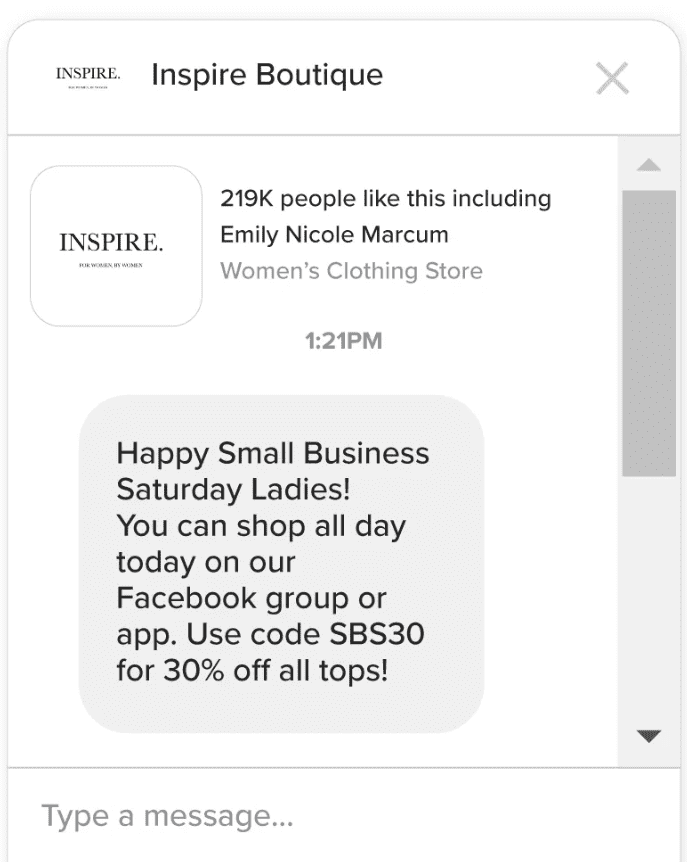
Fashion retailers must decide where to focus on their omnichannel marketing. With many platforms available and most customers spread across them, fashion retailers may get confused about which channels are best for their audiences.
Challenge #8: Consistent brand experience
Fashion retailers must ensure that their message, visual identity, and customer service are consistent across all channels. However, this can prove challenging when customers come from different platforms and have different expectations of each one.
Challenge #9: Customer privacy and security
Amidst all the talk of omnichannel marketing strategies, customer privacy and security must remain a priority. Fashion retailers must protect customer data and only collect it strictly following privacy laws, which can sometimes be challenging to grasp.
Challenge #10: Measuring and analyzing performance

Omnichannel marketing for fashion retailers generates an enormous amount of data — and all must be accurately measured and analyzed to help understand what works and what doesn’t. Without the right tools, fashion retailers may not have a clear understanding of how their efforts impact customer engagement, sales, and other metrics.
Key takeaways for your fashion retailer brand
- Develop a unified customer data strategy across channels.
- Reduce churn by better understanding customer behavior.
- Invest in the proper communication channels.
- Measure performance.
- Create a consistent brand experience with optimized content and visuals.
- Increase customer engagement through personalization.
Fashion retailers! We’ve got your back
Omnichannel marketing is the way of the future. With customer expectations and the competition increasing every minute, it’s now more important than ever to focus on customer engagement, loyalty, and overall experience.
With ContactPigeon, fashion retailers can effortlessly develop their campaigns across multiple channels. From creating sophisticated email marketing campaigns to building in-depth multichannel marketing strategies, ContactPigeon has the tools to plan your functional marketing strategy. Schedule a free 30-min demo with us today and find out how you can engage with your customers effectively.

Let’s Help You Scale Up
Spending time on Linkedin? Follow us and get notified of our thought-leadership content:





